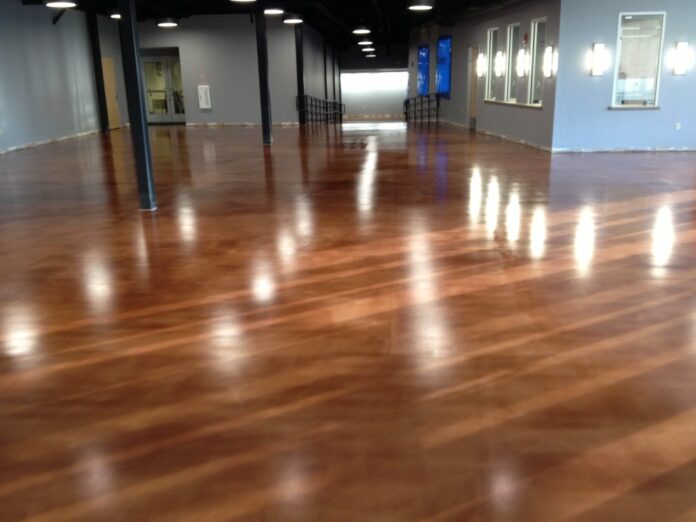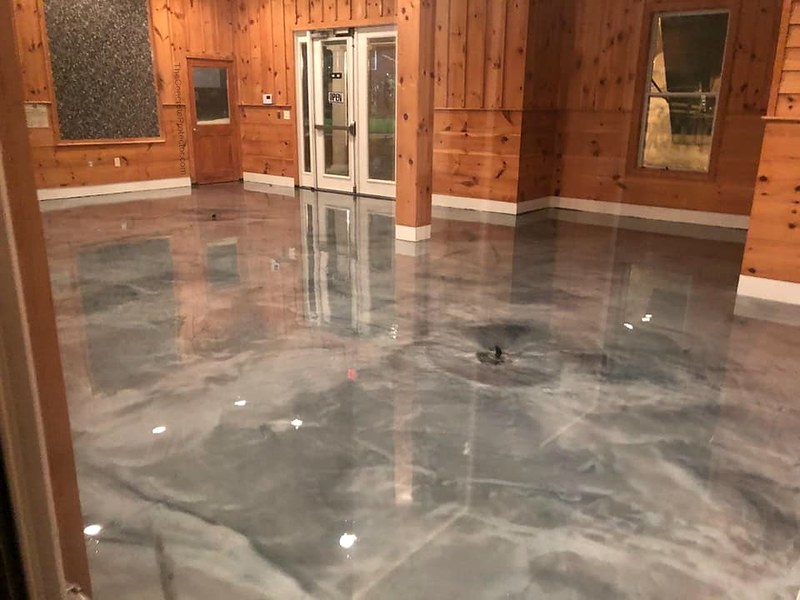Stained concrete and epoxy are two of the best flooring options for your home, and even for industrial and commercial spaces. They’re both versatile, durable, and aesthetically pleasing.
Weighing out the pros and cons of stained concrete and epoxy would be of great help in determining which is better for your build. They both perform well in various settings, but knowing which one would work best could save you from unexpected troubles.
Before making your choice, take a look at these different factors”
Durability
In determining the flooring’s durability, you have to consider the level of liquid and stain absorption to test the permeability of the surface. The more water and stain resistant the flooring, the more durable it is.
Stained concrete is durable enough for spaces that don’t cater too much movement. Although the color won’t chip off like paint and could last for a hundred years with proper maintenance, it needs another layer of sealant for protection against stain and moisture.
On the other hand, epoxy flooring is highly durable even for spaces with heavy foot traffic. It can even withstand heavy equipment and machineries, making it perfect for commercial and industrial spaces, as well as home garages.
Moreover, epoxy flooring is highly water-, stain-, and chemical-resistant, making it perfect for busy industrial spaces, and even for home kitchens. With proper care and maintenance, it could last at least 10 years in residential spaces, and two to three years in industrial spaces, considering the frequent heavy equipment traffic.
If epoxy flooring is right for your build and you live in Denver, for instance, make sure to hire the services of epoxy flooring Denver professionals for the best results.
Budget
Another thing to consider when it comes to your build is your budget. How much you’ll allot for the flooring often determines its quality and longevity. Furthermore, flooring is too big of a project to DIY, so you’ll really need the services of the experts.
If you’re looking for an affordable option, concrete staining would be best for you. Stained concrete performs well enough in low traffic areas, and can last long with proper maintenance.
While stained concrete seems more inexpensive at first, its maintenance may require additional cost over the years, compared to epoxy flooring. Plus, if the existing concrete floor has cracks and dents to be fixed, you might need an extra budget for repairs.
In contrast, epoxy flooring is still one of the most affordable flooring options, despite being a bit pricier than stained concrete. Its initial cost might be higher, but you’ll surely be saved from expensive maintenance costs when it’s properly installed. Also, epoxy floor coating can penetrate and fill in the dents on the existing concrete floor, so there’s no need for added budget in repairs and preparation.
Function
Before selecting the best flooring options, evaluate the functions of the space—whether it’s commercial, industrial, or residential, and its exposure to chemicals, liquids, and harsh conditions. The performance of the flooring materials will be determined by the busy-ness of the areas.
When it comes to the flooring’s longevity, keep in mind that heavy traffic areas are more prone to damages, no matter how durable the flooring materials are. Even the strongest flooring can eventually crack if it’s not suitable for moving extremely heavy equipment.
In contrast, spaces that are only exposed to foot traffic could last longer. Since there are no bulky objects that may cause accidental damages on the floor, it may require little to no repairs at all.
Considering these factors, either stained concrete or epoxy flooring could be a smart option for less busy areas. However, epoxy flooring is the wisest solution for busy spaces due to its proven durability and resilience.
Maintenance
All types of flooring require regular cleaning with proper care to last longer. However, choosing materials that are non-porous and weatherproof tend to be less demanding when it comes to maintenance effort and cost.
Stained concrete may involve lower upfront cost, depending on the design and how it’s done. Leaving it as is instead of applying a coat of sealant might expose the concrete over time and might eventually become porous.
To take care of stained concrete floors, regularly applying floor wax is a must to maintain its vibrant color and smooth texture. It’s also a great way to keep moisture from penetrating the surface. Spilled liquid must also be cleaned and dried immediately to avoid unwanted stains.
For epoxy floors, keeping them free from dust and debris is a must to avoid scratches. Although they’re water- and stain-resistant, letting liquids and dirt sit for too long can cause some damage on their surface.
One advantage of epoxy floors is they don’t regularly require soaps or other cleaning products to remove dirt. Often, you just need a good mop to wipe off dust and grime. For clearing up deep-seated dirt, you may use warm water and sponge to carefully rub it off.
To make sure you’re using the suitable cleaning products for your flooring, it’s best to ask your contractor for the dos and don’ts.
Curing Time
Allotting enough time for any flooring to set is needed to ensure its best condition. This means preventing any type of traffic for a certain period until the material is properly cured.
In terms of curing time, stained concrete floors require at least 24 hours. Even if the surface seems completely dry in less than an hour, it’s best to refrain from stepping on it, or pouring and splashing any liquid to maximize the quality of its finish.
Epoxy flooring, on the other hand, can already withstand foot traffic between 12-18 hours. For heavy traffic, its recommended curing time is at least 36 hours, and up to seven days in terms of complete chemical cure.
The total curing time of each flooring material depends on the products used by the contractor, specified by the manufacturer. Adhering to the curing instructions is vital to guarantee its finest quality.
Aesthetics
In terms of design, both offer many options. The best choice will be based on your preferences and the overall theme of the space.
Staining a concrete floor retains its natural look and texture, but with added color. This gives the space such a unique character, and goes well with a wide range of interior design. You may also keep its natural light and dark gray color for an earthy, stone-like feel.
As for epoxy flooring, the design options are almost limitless. With the help of an expert on epoxy installation, you can bring your vision to life. You can go for a plain and smooth texture, to marble-like shiny surfaces.
Bottomline
After examining these important factors, making the choice for a better flooring solution will be easier for you. Remember, the best flooring for a certain space is relative, so it’s best to take everything in consideration before taking the next step.



















